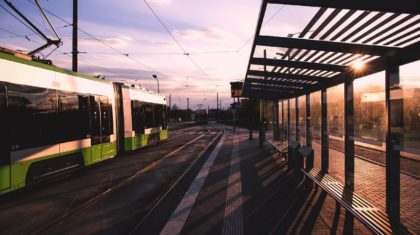
By Fred Young, Principal, Alta Planning + Design
The first question I always get is “how do you do a statewide pedestrian and bicycle plan for Alaska?” This is a legitimate question. Alaska is huge: we have all seen the map showing the state of Alaska spanning the width of the lower 48 states. Alaska is sparsely populated: Approximately 736,000 inhabitants, with over half of them living in Anchorage.
Transportation in Alaska is challenging at best: with a disconnected road system, an extensive fleet of boats and planes connects the state. And then, there is winter: engulfed in darkness and sub-zero temperatures for months might make someone from a warmer climate wonder about how life can even exist in such conditions.

Knowing all of this, I try to explain the admittedly daunting task by running through some statistics:
- Alaska has some of the highest average gas prices in the country: up to $10.00 per gallon in some rural places. This is a sad irony for a state with the third highest production of petroleum.
- Alaska has the highest percentage of people who bike or walk to work. In many villages walking and riding a bicycle just makes sense given the often short distances and high fuel costs.
- Alaska has some of the highest rates for pedestrian or bicyclist fatalities among certain demographic groups (youth, seniors and people of color). Many streets are designed with motor vehicles in mind, and maybe more importantly, snow removal.
Clearly, there is a demand and a need for policies and infrastructure to improve safety. Last summer, I traveled from Anchorage to Fairbanks and was inspired by the landscape and what people are already doing to improve their communities.
Bike Anchorage

In 8 years, Bike Anchorage has grown from a small group of interested people to an advocacy group with the ability to successfully influence city policy. In coordination with the Spenard Chamber of Commerce, Bike Anchorage is organizing community members to be involved with the Spenard Corridor Plan, which aims to improve livability, walkability and bikeability and promote transit oriented development along the corridor. On a beautiful late-July day, 60 people showed up for a bike tour through the neighborhood.
Denali

The Alaskan landscape is awe inspiring. Riding a bicycle 70 miles on a gravel road through grand landscapes and coming face to face with caribou, moose and bears really reminds a person what it means to be alive. The 100 mile park road is closed to private vehicles, so an extensive public bus system outfitted with transit bike racks provides easy access to remote the wilderness for hikers and bicyclists.
Fairbikes

Fairbanks has the northernmost bike share system in the world, and it is solar powered. Contrary to what I previously thought, bike share is rocket science. The operators of Fairbikes worked with local rocket engineers to develop the new system that caters to the university population, residents and visitors.
Alaskans have an amazing history of being resourceful and getting things done. Considering their environment, this ingenuity is essential for survival. From what I saw on this brief trip, it extends to walking and bicycling. My colleagues at Alta are excited to be working with the AK DOT&PF and our partners at DOWL to develop a unique and innovative pedestrian and bicycle plan for Alaska that supports walking and bicycling as safe and ordinary modes of transportation for all Alaskans.


